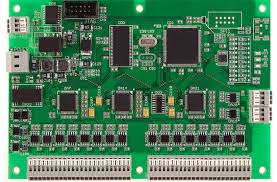Key Advantages of Via Tenting
Tenting vias—the process of covering vias (small holes on a printed circuit board) with a protective mask—has become a standard practice in PCB manufacturing due to its significant benefits in enhancing board functionality and longevity. Understanding these benefits is crucial for manufacturers aiming to optimize their product performance and cost-effectiveness.
Enhanced Product Reliability
Prevents Contamination and Short Circuits One of the primary benefits of via tenting is its ability to prevent the intrusion of solder, chemicals, and environmental contaminants into the vias during the PCB assembly process. This prevention is crucial because contaminants can cause short circuits or degrade the electrical paths, potentially leading to board failures. Tenting effectively seals off these pathways, significantly reducing the risk of malfunction. Studies indicate that effective via tenting can enhance the reliability of PCBs by up to 50% in environments exposed to high levels of contaminants.
Improved Aesthetic and Structural Integrity
Creates a Smooth Surface for Additional Components By covering the vias, tenting helps create a flat and smooth surface on the PCB. This smoothness is particularly beneficial when mounting surface components, as it ensures that these components sit flush against the board, thereby improving both the aesthetic appeal and the structural integrity of the device. The flat surface also minimizes issues during the soldering process, reducing the likelihood of defective joints.
Cost-Effective Manufacturing
Reduces Need for Repairs and Replacements Although tenting vias requires an upfront investment in materials and process adaptation, it pays off by reducing the need for subsequent repairs and rework. By protecting the vias from potential damage during the assembly and operational phases, tenting helps maintain the functionality of the PCB over its intended lifespan, thereby lowering the total cost of ownership. Data from manufacturing case studies suggest that the initial costs of implementing tenting can be offset by up to 30% due to reduced warranty claims and customer returns.
Enhanced Thermal Management
Supports Heat Dissipation While the primary function of tenting is to protect the vias, it also contributes indirectly to better thermal management of the PCB. Covered vias can help distribute heat more evenly across the board, preventing hotspots that could damage sensitive components. Effective thermal management is critical in high-performance electronics, where overheating can lead to significant efficiency losses and safety risks.
Applications in High-Demand Industries
Essential for Automotive and Aerospace Applications In industries where electronics are subjected to extreme conditions, such as automotive and aerospace, the benefits of tenting become even more pronounced. These sectors require PCBs that can withstand vibrations, moisture, and chemical exposure without degradation in performance. Tenting ensures that the vias are shielded from these environmental factors, thereby enhancing the durability and reliability of the electronics in these critical applications.
Tenting plays a pivotal role in PCB manufacturing by bolstering the board's durability, functionality, and cost-effectiveness. Its implementation has become a standard in the industry, especially for applications demanding high reliability. For an in-depth exploration of the benefits and methods of via tenting, consider visiting tenting.
